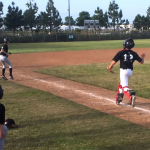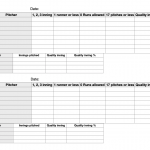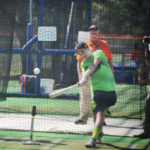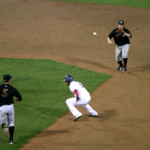CCA Podcast 157 – The how when and why of throwing a curveball in high school baseball
Podcast: Play in new window | Download | Embed
Subscribe: RSS
There are many professional organizations that are putting a premium on pitchers who throw really good curveballs. In fact, several pitchers in the Major Leagues have been very successful over the past few seasons with the curveball as the predominate pitch (Rich Hill, Lance McCullers) and several others have made it a huge part of their otherwise impressive arsenal.
The goal of the curve ball
The curveball is predominately a swing and miss pitch, but there are two great ways to utilize a curveball. The overlying philosophy of a curveball is to make it look like a ball when it is a strike and look like a strike when it is a ball.
There are three types of curveballs that will accomplish this goal, the one that starts in the zone and drops or slides out, the one that starts at a same handed hitters shoulder and snaps into the zone or one that starts outride the zone to an opposite handed hitter and snaps back into the zone.
The other major use of the curveball is as a get-a-head pitch. Many teams (mine included) teach to attack fastballs early in the count and lay off breaking balls until late. This means that if you have the ability to throw a curveball over for a strike on the first pitch, most teams and hitters will take it. The best part about that is you don’t have to create very much spin and make it break very much, it just has to be spinning and be a strike.
Be weary though, very good hitters will often sit on or guess curveball first pitch and one without much break or spin is a very, very hittable pitch to a good hitter. This “get me over” tactic would be best used against above average, average, or below average hitter. You will probably still want to try to create a lot of spin against better hitters.
When the curveball is least effective
The bottom line is that a good curveball throw over the for a strike is a pretty effective pitch in almost any count. I do try to avoid being overly predicable when calling pitches, and one of the most predictable things pitchers and pitching coaches do is to call a curveball after a baseball strike early in the count.
This predicability does two things. 1.) It gives the hitter a chance to sit on a pitch if he has seen you throw this sequence often and 2.) it gives a team that likes to run a pitch they are almost certain to take advantage of.
Two of the negative effects of a curveball is that hitters can often recognize spin and see a different angle out of the hand (up). Because of this, if the curveball is throw in a hitters count the hitter may be able to recognize and lay off the pitch. Compare this to a change up where it looks similar to a fastball out of the hand and by the time the hitter realizes it isn’t a fastball, they have already committed.
A sneaky time to throw the curveball
A great time to throw a breaking ball is after an 0-1 curveball for a ball after a first pitch fastball strike.. That leaves the count at 1-1 and since the last pitch was a curveball ball, the hitter is undoubtedly sitting on a fastball.
Clearly pitchers and coaches have no issue calling for 1-1 curveballs, because in most cases where the pitches are reversed (curveball ball then fastball strike) coaches, pitchers, and catchers often call for a curveball.
This takes advantage fo a hitter who is clearly sitting on a fastball since teams rarely double up on curveballs after throwing one for a ball.
Two different curve balls
Greg Maddux, who had a very underrated curve ball, used to say he never wanted any two pitches to look alike, and this should be a goal of yours after you become competent at the spin and release of a curveball.
Try messing around with different types of curveballs, some that you throw harder, some that you throw softer, some you try to spin faster, some you try to spin less.
I know the question you have right now, why would you want a curveball that spins and breaks less? The simple answer to that is one that spins more and breaks more may be more difficult to control. So for the pitch when just simply throwing a strike is enough, that could be an excellent option.
Tips for training the curve ball
-
Draw a line down the middle of the ball. Try to get the ball to rotate directly down that line with as much top spin as possible. Top spin is what makes the ball have vertical break and misses bats.
-
Spin curveballs using 10 toes throwing drill to take the bottom half of the throw out of it.
-
Practice throwing it to a short target. One of the more difficult things for pitchers to learn to do is to get on top of the breaking ball. Throwing to a short target will help pitchers get on top of the ball.
-
Mess around with grip pressures, and know when you need to use each one.
-
Even if you don’t have success with it early, keep throwing it in games. This is perhaps the toughest thing to do. Many times a pitcher will struggle with the change up and cast it aside, then no real development takes place.
-
Video fastballs and curveballs and do a video overlay if possible. This will let you see if you have the same arm slot for both and how much difference there is in the angle of the ball out of the hand.
-
Know the goal of each curveball you throw. Have a curveball that is designed to get a swing and miss (that starts in the zone and drops out) and a curveball that is designed to generate a take (starts above the zone and drops in). Train both of them and have a specific stated goal for each pitch.
 Posted by Kyle Nelson
Posted by Kyle Nelson- Posted in Pitching
 Nov, 19, 2018
Nov, 19, 2018 No Comments.
No Comments.
Elite members login here
Check out what’s New/Hot!
Recognizing, Diagnosing, and Fixing Common Hitting Flaws eCourse The 3 metrics we tested on Blast motion sensors this year Sneak Peek Inside an Elite Q and A The batting practice continuum Elite Member’s area table of contents 50+ “Chaos” hitting drills
5 sample Chaos hitting drills FREE
Mental Skills and Culture Building The hitting pyramid Welcome Elite Member, Trey! Ideas for a pitcher first practice 12 week bat speed improvement plan Make plans this offseason to have your team playing their best baseball at the end of the year” Top 5 hitting drills to translate practice skill to game performanceHow we used Blast Motion sensors with a team in 2019
What to do if your hitters are overmatched Welcome Elite Member, Tommy! Setting your baserunners up for success Welcome Elite Member, Mike! A consulting call with Elite Member Matt FREE Web Clinic: Developing Athletic, Consistent, Extraordinary Infielders
 Coach Kyle Nelson
Coach Kyle Nelson




